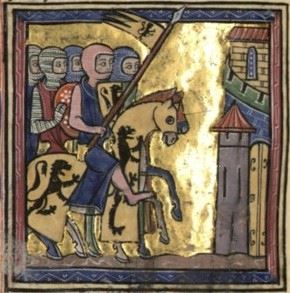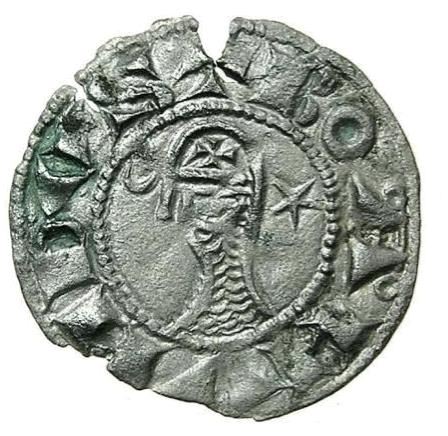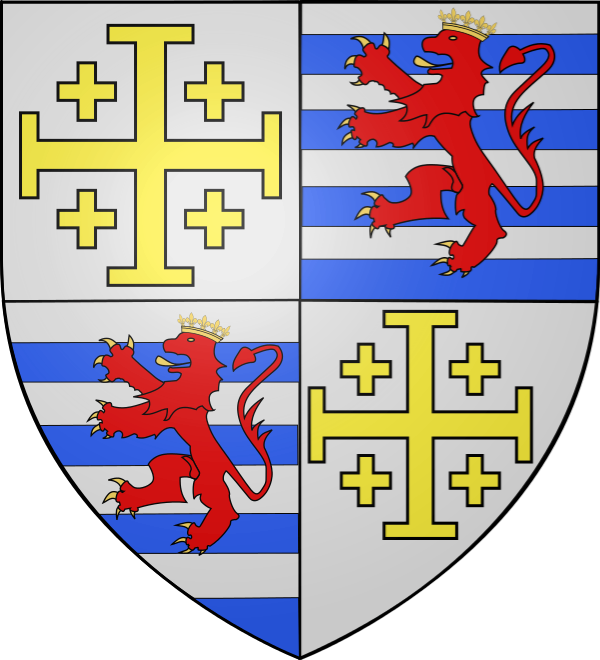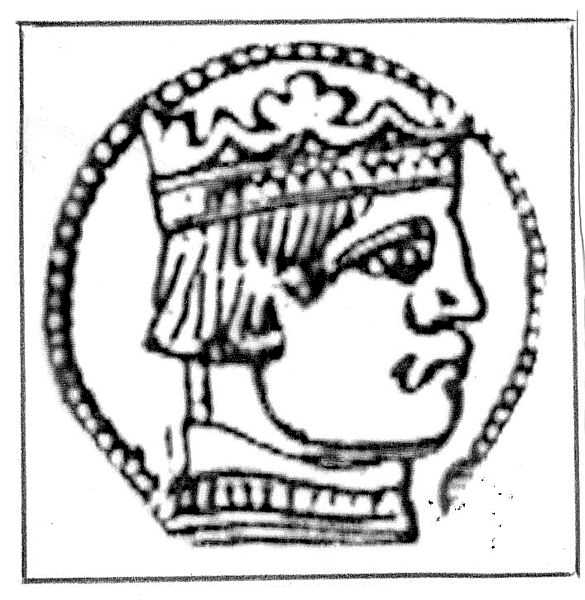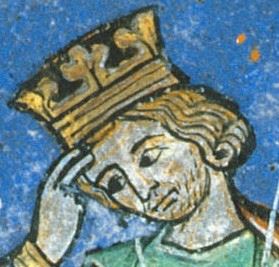The Crusader states, also known as Outremer, were a number of mostly 12th- and 13th-century feudal Christian states created by Western European crusaders in Asia Minor, Greece and the Holy Land, and during the Northern Crusades in the eastern Baltic area. The name also refers to other territorial gains (often small and short-lived) made by medieval Christendom against Muslim and pagan adversaries.
The Crusader states in the Levant were the Kingdom of Jerusalem, the Principality of Antioch, the County of Tripoli and the County of Edessa. The people of the Crusader states were generally referred to as "Latins". During the Third Crusade, the Crusaders founded the Kingdom of Cyprus.
The coins minted in Jerusalem during the 12th century show patriarchal crosses with various modifications. Coins minted under Henry I show a cross with four dots in the four quarters, but the Jerusalem cross proper appears only on a coin minted under John II. The crescent in pellet symbol is used in Crusader coins of the 12th century, and many Crusader seals and coins show a crescent and a star or blazing Sun on either side of the ruler's head or as the obverse motif.
The Crusader states in the Levant were the Kingdom of Jerusalem, the Principality of Antioch, the County of Tripoli and the County of Edessa. The people of the Crusader states were generally referred to as "Latins". During the Third Crusade, the Crusaders founded the Kingdom of Cyprus.
The coins minted in Jerusalem during the 12th century show patriarchal crosses with various modifications. Coins minted under Henry I show a cross with four dots in the four quarters, but the Jerusalem cross proper appears only on a coin minted under John II. The crescent in pellet symbol is used in Crusader coins of the 12th century, and many Crusader seals and coins show a crescent and a star or blazing Sun on either side of the ruler's head or as the obverse motif.
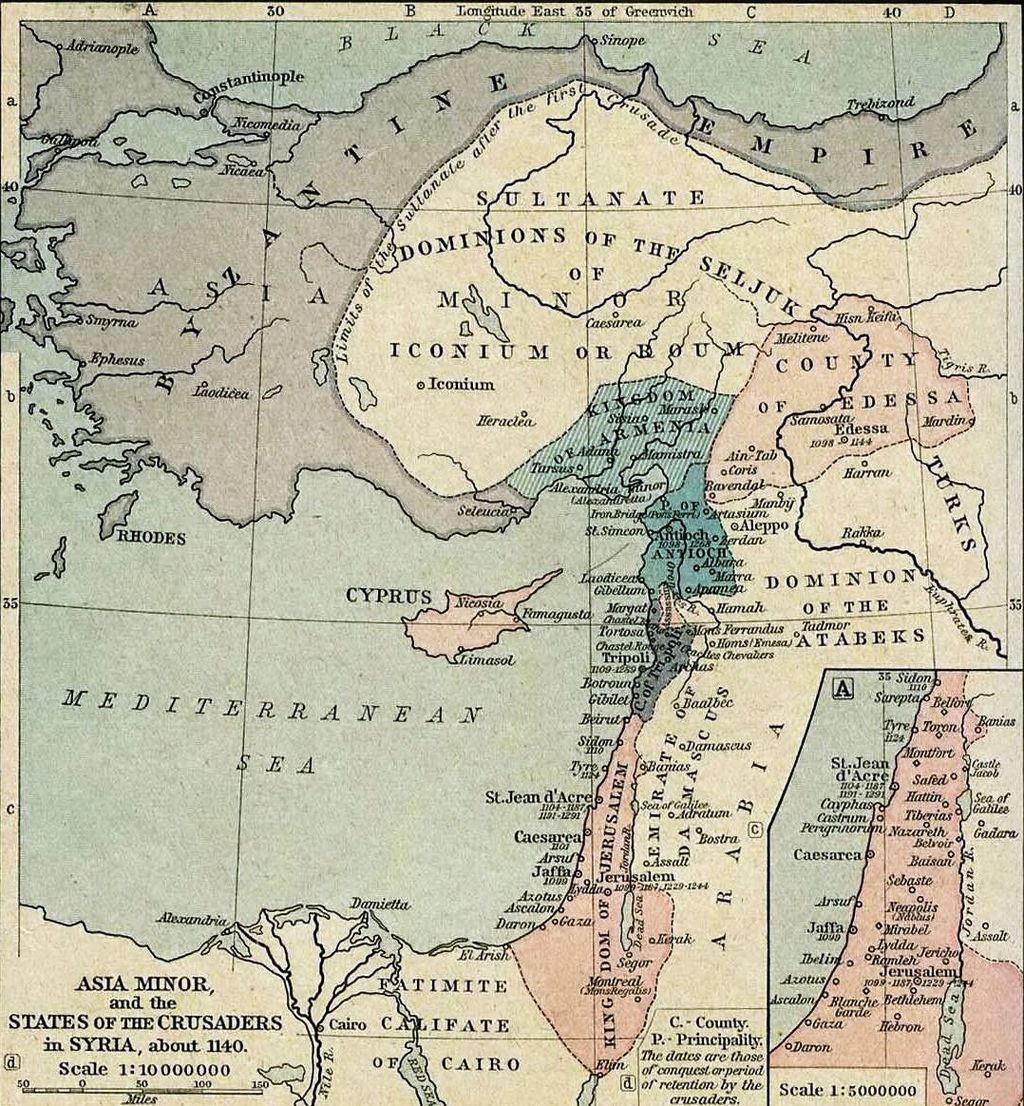
Bohemond III of Antioch was Prince of Antioch from 1163 to 1201. He was the elder son of Constance of Antioch and her first husband, Raymond of Poitiers. Bohemond ascended to the throne after the Antiochene noblemen dethroned his mother with the assistance of Thoros II, Lord of Armenian Cilicia.
He fell into captivity in the Battle of Artah in 1164, but the victorious Nur ad-Din, atabe...
He fell into captivity in the Battle of Artah in 1164, but the victorious Nur ad-Din, atabe...
Bohemond IV was Count of Tripoli from 1187 to 1233, and Prince of Antioch from 1201 to 1216 and from 1219 to 1233. He was the younger son of Bohemond III of Antioch. The dying Raymond III of Tripoli offered his county to Bohemond's elder brother, Raymond, but their father sent Bohemond to Tripoli in late 1187.
After his father died in April 1201, Bohemond seized Antioch with the suppor...
After his father died in April 1201, Bohemond seized Antioch with the suppor...
Henry II was the last crowned King of Jerusalem (after the fall of Acre in 1291, this title became empty) and also ruled as King of Cyprus. He was a Lusignan dynast. He was the second surviving son of Hugh III and succeeded his brother John I in May 1285; there was some suspicion that Henry had been involved in poisoning John. He was crowned at Santa Sophia, Nicosia, 24 June 1285.
Durin...
Durin...
Hugh IV was King of Cyprus from 31 March 1324 to his abdication, on 24 November 1358 and, nominally, King of Jerusalem, as Hugh II, until his death.
Hugh appears to have been content to rule Cyprus, as he prevented his son, Peter I, from going to Western Europe to recruit support for a new crusade to recover their Kingdom of Jerusalem. In 1344, he joined a league with Venice and the Kn...
Hugh appears to have been content to rule Cyprus, as he prevented his son, Peter I, from going to Western Europe to recruit support for a new crusade to recover their Kingdom of Jerusalem. In 1344, he joined a league with Venice and the Kn...
James II was the penultimate King of Cyprus, reigning from 1463 until his death in1473. He is known as Jaques II in French.
James was born in Nicosia as the illegitimate son of John II of Cyprus and Marietta de Patras. He was a great favourite of his father, and in 1456, at the age of 16, he was appointed to the archbishopric of Nicosia. After murdering Iacopo Urri, the Royal Chamberla...
James was born in Nicosia as the illegitimate son of John II of Cyprus and Marietta de Patras. He was a great favourite of his father, and in 1456, at the age of 16, he was appointed to the archbishopric of Nicosia. After murdering Iacopo Urri, the Royal Chamberla...
Fulk V, also known as Fulk the Younger, was the Count of Anjou from 1109 to 1129 and the King of Jerusalem from 1131 to his death. During his reign, the Kingdom of Jerusalem reached its largest territorial extent.
He was originally an opponent of King Henry I of England and a supporter of King Louis VI of France, but in 1118 or 1119 he had allied with Henry when he arranged for his daug...
He was originally an opponent of King Henry I of England and a supporter of King Louis VI of France, but in 1118 or 1119 he had allied with Henry when he arranged for his daug...

